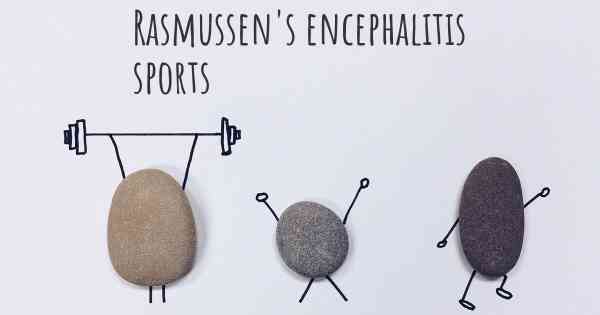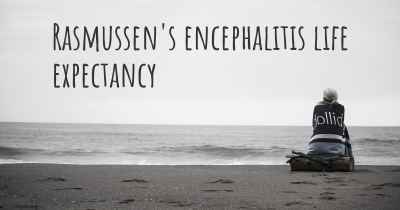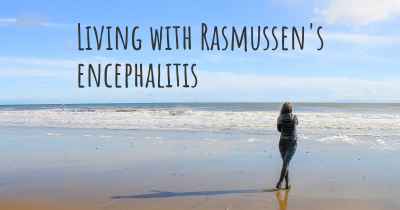Is it advisable to do exercise when affected by Rasmussen's encephalitis? Which activities would you suggest and how intense should they be?
See if it is advisable for people with Rasmussen's encephalitis to practice sports and which ones are the most recommended if you have Rasmussen's encephalitis

Rasmussen's encephalitis is a rare and chronic inflammatory neurological disorder that primarily affects children. It is characterized by frequent seizures, progressive brain damage, and cognitive decline. While exercise is generally beneficial for overall health and well-being, it is important to approach physical activity with caution when dealing with Rasmussen's encephalitis.
Consultation with a healthcare professional is crucial before starting any exercise regimen for individuals with Rasmussen's encephalitis. They can provide personalized guidance based on the severity of the condition, individual limitations, and specific needs. The healthcare professional will consider factors such as the frequency and intensity of seizures, overall physical health, and any associated complications.
When it comes to exercise, the primary goals for individuals with Rasmussen's encephalitis are to maintain cardiovascular fitness, improve muscle strength and flexibility, and enhance overall quality of life. However, it is important to strike a balance between the benefits of exercise and the potential risks associated with seizures and increased brain activity.
Low-impact aerobic exercises are generally recommended for individuals with Rasmussen's encephalitis. These exercises are gentle on the joints and minimize the risk of injury. Examples of low-impact aerobic exercises include:
- Walking: A brisk walk can help improve cardiovascular fitness without putting excessive strain on the body.
- Swimming: Water-based exercises are particularly beneficial as they provide resistance and support, reducing the risk of falls or injuries.
- Cycling: Stationary or outdoor cycling can be a great way to improve cardiovascular health and leg strength.
- Elliptical training: This low-impact exercise machine provides a full-body workout while minimizing stress on the joints.
Strength training exercises can also be incorporated into the exercise routine, focusing on improving muscle strength and flexibility. However, it is important to use light weights and perform exercises under supervision to prevent injury. Some examples of strength training exercises include:
- Bodyweight exercises: Push-ups, squats, lunges, and planks can help improve overall strength without the need for additional equipment.
- Resistance band exercises: Using resistance bands can provide a safe and effective way to strengthen muscles without putting excessive strain on the body.
- Lightweight training: Using light dumbbells or weight machines under supervision can help improve muscle strength and tone.
Flexibility exercises are essential to maintain joint mobility and prevent muscle stiffness. Stretching exercises should be performed gently and without force, focusing on major muscle groups. Some examples of flexibility exercises include:
- Yoga: Practicing gentle yoga poses can help improve flexibility, balance, and relaxation.
- Pilates: Pilates exercises focus on core strength, flexibility, and body awareness.
- Static stretching: Holding stretches for 15-30 seconds can help improve flexibility over time.
Intensity of exercise should be individualized and based on the person's overall health, seizure frequency, and tolerance. It is important to start with low-intensity exercises and gradually increase the duration and intensity as tolerated. Monitoring for any adverse effects, such as increased seizure activity or fatigue, is crucial during and after exercise.
Exercise modifications may be necessary depending on the individual's condition. For example, if seizures are triggered by overheating, it may be advisable to exercise in a cool environment or use cooling aids. Additionally, individuals with Rasmussen's encephalitis may benefit from exercising under the supervision of a trained professional who can provide guidance and support.
Conclusion:
While exercise can have numerous benefits for individuals with Rasmussen's encephalitis, it is essential to approach it with caution and seek guidance from a healthcare professional. Low-impact aerobic exercises, strength training, and flexibility exercises can be incorporated into the routine, but the intensity and duration should be individualized. Regular monitoring for any adverse effects is crucial, and modifications may be necessary based on the individual's condition. By incorporating exercise safely and effectively, individuals with Rasmussen's encephalitis can improve their overall well-being and quality of life.








